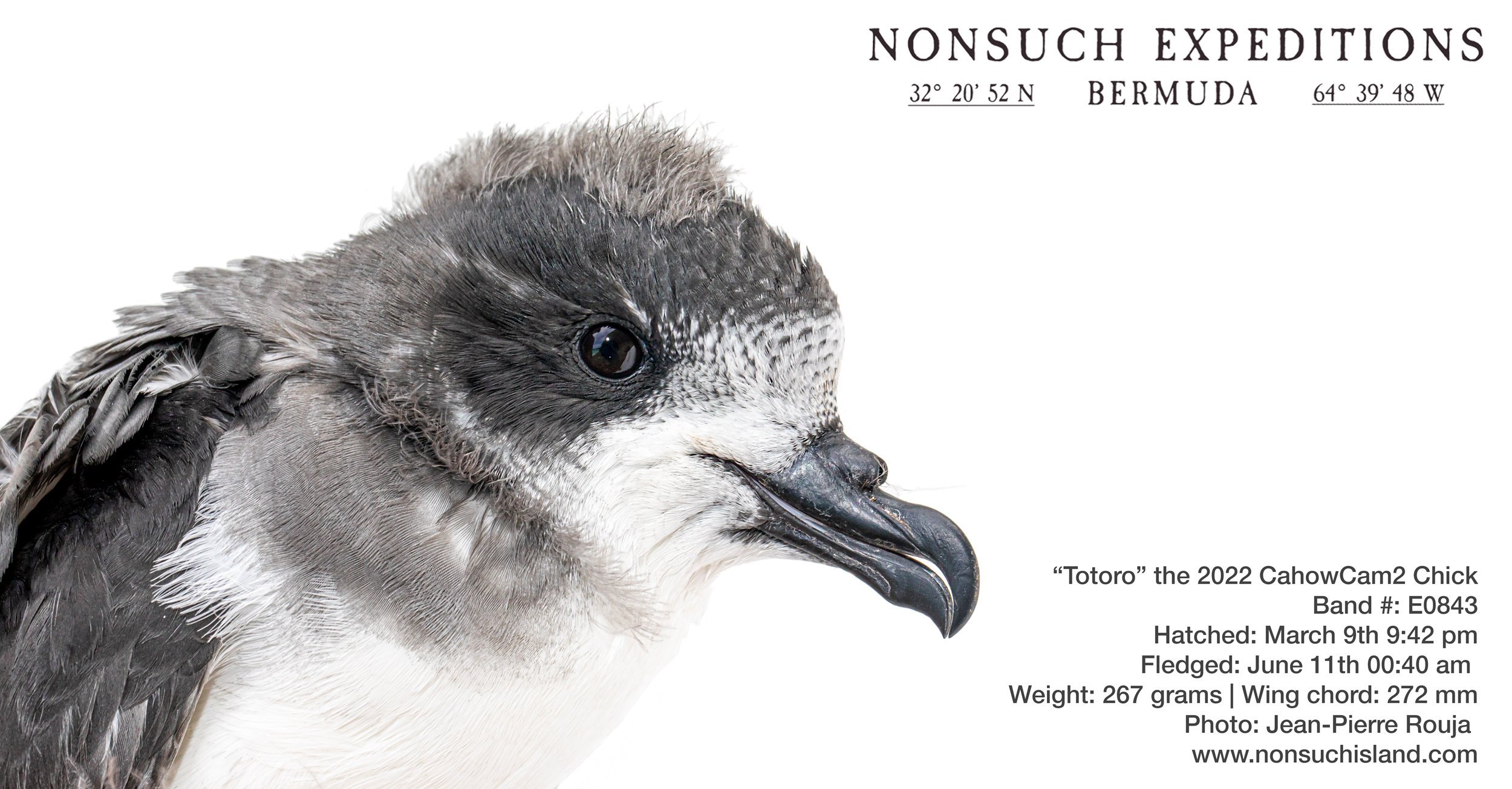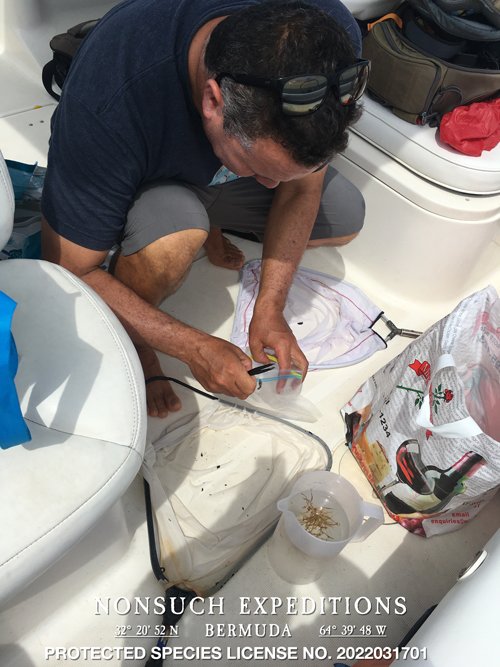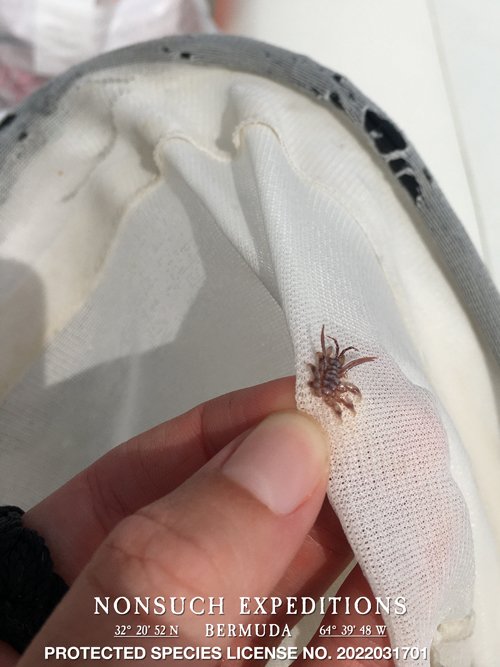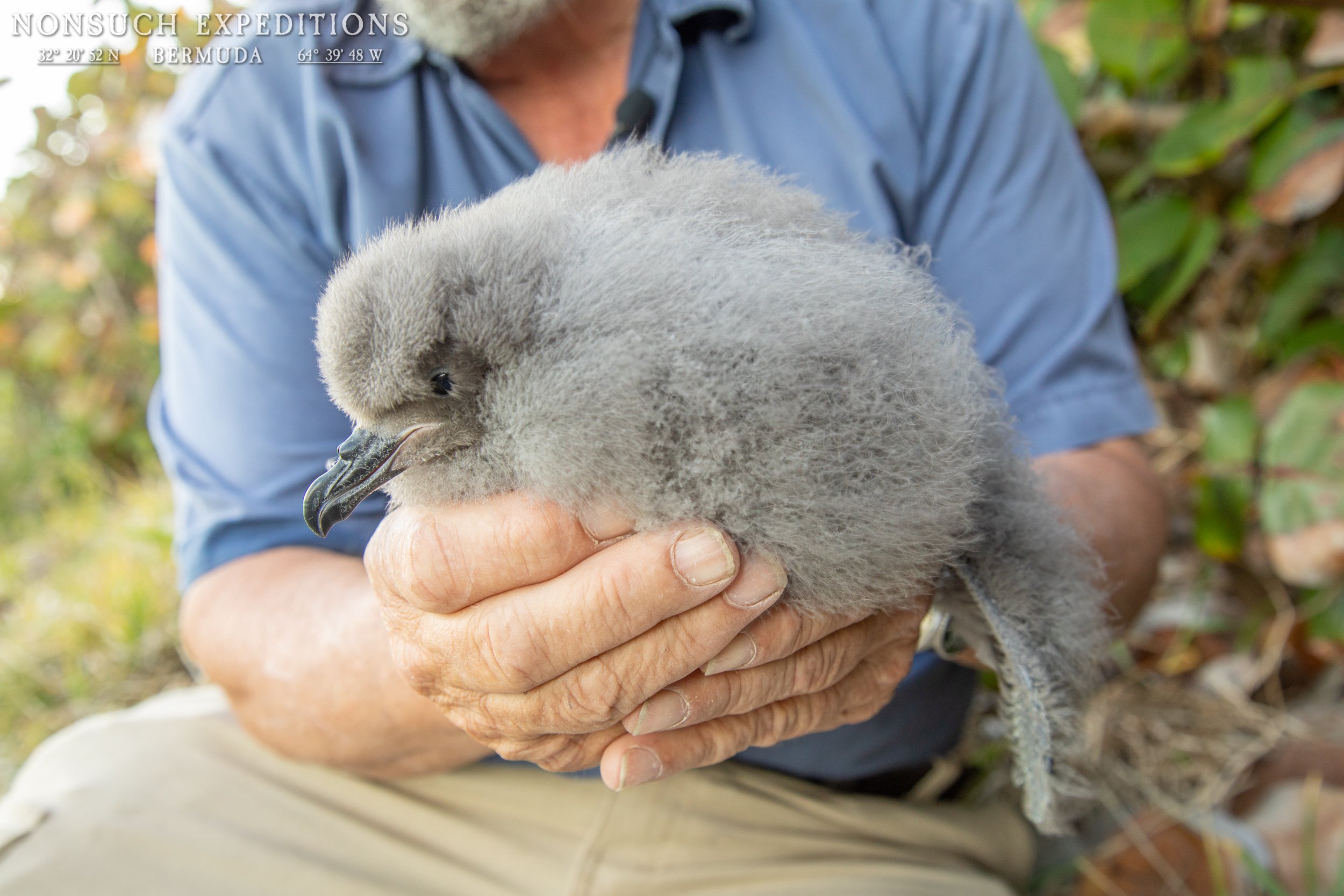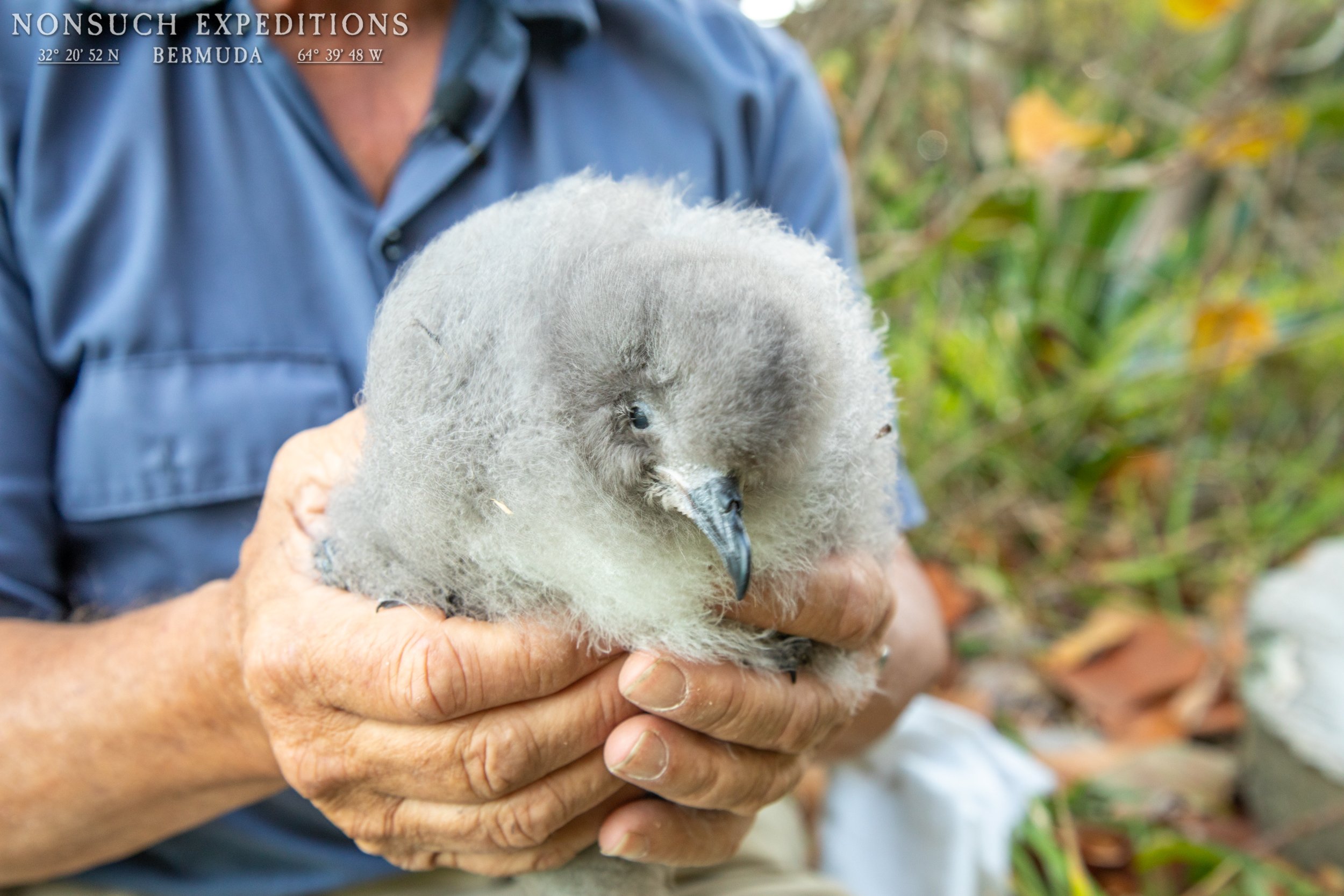The Bermuda Petrel (Cahow) Pterodroma cahow is a pelagic seabird not often seen by the public on Bermuda, despite being officially declared as the island’s National Bird in 2003. It is endemic to the Islands of Bermuda, nesting no-where else on Earth. In contrast to the well-known Longtail, or Tropicbird, which is highly visible during daylight hours around Bermuda’s coastlines during the Spring and Summer months, the Cahow only approaches land at night, nesting during the Winter and Spring on a few offshore islands in the Castle Harbour area.
Originally abundant, the Cahow numbered as many as half a million pairs at the time of Bermuda’s discovery in the early 1500s, but was catastrophically impacted by the introduction of pigs of mammal predators such as rats, cats, dogs and hogs. By the 1620s the Cahow was thought to be extinct, a belief that persisted for 330 years until the rediscovery in 1951 of a tiny remnant population on four small, rocky half-acre offshore islets.
The Bermuda Petrel (Cahow) Recovery Program is a long-term management, research and recovery program that has been in place since 1960, with a primary objective being the recovery of the Cahow’s breeding population through the following:
a) The control of threats to the species;
b) The construction of artificial concrete nesting burrows, to compensate for a lack of suitable natural burrows on the tiny soilless nesting islands;
c) The establishment of entirely new nesting colonies on larger islands less vulnerable to hurricane erosion and flooding and sea-level rise.
Other primary objectives of the program include the following:
1) to promote public education and understanding of the importance of the Cahow to the natural heritage and unique natural environment of Bermuda, as well as the cultural significance of the species.
2) to use new technology and techniques to determine the oceanic range and significant foraging areas for the species, and to determine if there are threats such as offshore oil and gas exploration and extraction, that may overlap with the Cahow’s oceanic range.
The Cahow Recovery Program has been successful in addressing most of the threats affecting the Cahow on the breeding islands in Bermuda, enabling the population to increase from only 18 breeding pairs producing a combined total of 7 to 8 chicks annually in the early 1960s, to a record number of 156 breeding pairs in 2022, producing a record total of 77 successfully fledged chicks. This is up from 143 pairs producing 71 fledged chicks in 2021.
One of the main concerns for the future survival and continued recovery of the Cahow is the effect of climate change and global warming on the tiny original offshore nesting islets on Bermuda. This is primarily due to the impacts of sea-level rise on the islands, most of which are of very low elevation, and of stronger, more frequent hurricane events, which have caused massive erosion and flooding from huge waves and storm surge on these exposed islands.
To address the threats caused by climate change, new Cahow nesting colonies have been established on the nearby larger, more elevated Nonsuch Island Nature Reserve. Nonsuch is seven times larger than the combined area of all four original nesting islands, and has been restored since 1964 as a “Living Museum” with the original endemic and native forest cover and animal communities that used to cover the main islands of Bermuda, but have been almost completely replaced by introduced invasive species.
Fig. 2: Location of newly established Cahow nesting colonies on Nonsuch Island
Two nesting colonies of Cahows were established in separate projects by the Terrestrial Conservation Officer in 2004-2008 and 2013-2017 through the translocation of near-fledged chicks from the original islands to artificial concrete nest burrows constructed on Nonsuch *(Fig. 2). Chicks are monitored through their development and moved to the new nests about 21 days before fledging. They are then hand-fed fresh Squid and Anchovies every day, until they fledge to sea, not returning for 3 to 5 years. The two translocation projects have been successful with a 49 % return rate of fledged chicks, leading to the first nesting pairs and hatched chicks by 2009 to be recorded on Nonsuch Island since the 1620s. These nesting colonies have rapidly grown by 2022 to become the second-largest sub-population of all the nesting islands at 35 breeding pairs, and continue to grow and attract even non-translocated Cahows from the original islands. This is largely due to the fact that the new colonies are located at a much higher elevation on Nonsuch than on any of the other islands, and have not been disrupted or damaged by hurricane waves, storm surge and erosion.
During the 2022 breeding season, work was carried out retrieving Geolocator (GLS) tags that were fitted to the legs of adult Cahows 1 to 2 years before, enabling tracking of their movements at sea and identifying important feeding areas, which include the grand banks east of Nova Scotia and cooler, more productive waters well north of the Gulf Stream. In May and June, 37 GLS tags were fitted for the first time to fledglings just about to leave the nests, which will gather data for 3 years, archiving it until the tags can be recovered when the young birds return to nest. This will fill an important gap in knowledge, as nothing is presently known about where young Cahows go during the years when they are exploring and learning to survive on the open ocean.
Work was also carried out upgrading the highly successful live-stream “CahowCam” infrared video system on the island, the result of our partnership with J.P. Rouja, founder and tech developer for the Nonsuch Expeditions, and the Cornell Bird Laboratory. These videos enable a local and international audience to observe the nesting activities and chick rearing of Cahows in their underground burrows.
Despite the continuing recovery of the Cahow, it is still critically endangered and one of the rarest seabirds on Earth. Continued management, to control both old and new, emerging threats, will be essential to enable the continued recovery of Bermuda’s beautiful National Bird.
Report compiled by: Jeremy L. Madeiros, Principle Terrestrial Conservation Officer, Terrestrial Conservation Division, Department of Environment and Natural Resources, BERMUDA
















